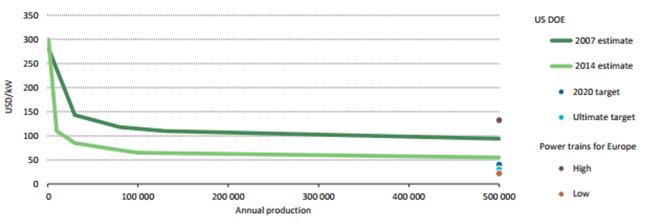Incentives for deployment
- Increased Renewable Energy Generation
- Decarbonisation of the Short Term Operating Reserve Market
- More Incentives to Clean Transport Solutions
- Carbon Tax Applied to Fossil Fuelled Systems
- Mass Production - Lower CAPEX and OPEX
Barriers to Deployment
- Storage of Large Quantities of Hydrogen on Site has Space and Safety Constraints
- This Model Assumes there will be a Large Number of Fuel Cell Vehicles in the Future
Other barriers to deployment include:
- For large scale deployment, workers with new skills would be required for construction and maintenance of these facilities.
- Reinforcement of the network infrastructure would be required for operation of a large scale electrolyser.
- Inefficiency of system - improvements in technology would assist in the project development.
[1] McKinsey and Co. (2011), A Portfolio of Powertrains for Europe: a Fact-Based Analysis, The Role of Battery Electric Vehicles, Plug-in Hybrids and Fuel Cell Electric Vehicles; US DOE (2012), Fuel Cell technologies Program Record; US DOE (2014d), DOE Fuel Cell Technologies Office Record – Fuel Cell System Costs.
[2] Weeda et al. (2014), Towards a Comprehensive Hydrogen Infrastructure for Fuel Cell Electric Cars in View of EU GHG Reduction Targets; personal contact with US Department of Energy; Japanese registration from database of Japan Automobile Dealers Association (JADA, March, 2015).
[2] Weeda et al. (2014), Towards a Comprehensive Hydrogen Infrastructure for Fuel Cell Electric Cars in View of EU GHG Reduction Targets; personal contact with US Department of Energy; Japanese registration from database of Japan Automobile Dealers Association (JADA, March, 2015).



